When the 1896 Lumière film Danseuses des rues was screened on French television in 1995, the accompanying commentary stated that the three women dancing were Irish. Other than that the actual dance looks like a hornpipe, I can't see on what this attribution of ethnicity is based. Similarly, the ethnicity attributed by this description of the film from the 1897 Warwick Trading Company catalogue seems to be based only on a prevailing cliché: 'Two little urchins are dancing to the airs of a grind organ, under the masterly manipulation of a dusky Italian, surrounded by an admiring crowd.'
In search of better context for this film, I came across contemporary newspaper reports of a young woman arrested for dancing on Adelaide Street, by the Strand (not far from where the film was apparently shot, on Drury Lane):
I'm not suggesting that the woman we see in the Lumière film is Lydia Davis, nor indeed that her accompanying barrel organist is the unfeasibly named Ernest Edifit:
But Lydia Davis and the performers in the Lumière film belong together as a type of London street life in the 1890s for which illustrations are rare. The best I have found is Spencer Gore's sketch from 1904:
In her book The Haunted Gallery, Lynda Nead gives a context to the Lumière film:
This may be a world of street-dancing and lounging, but the only ones likely to dance in Paul Martin's photograph are the children. Only children are dancing in the illustrations below, by Dorothy Tennant for her book London Street Arabs (1890) and by William Rainey in George R. Sims's Living London (1902):
Likewise in this photograph, illustrating the article on dancing in Living London:
In Sims's encyclopedia of London life there is a place for such 'rare spectacles' as the one-legged dancer and 'the man without legs clog-dancing':
But there doesn't seem to be any account of professional street dancers like Lydia Davis and the women in the Lumière film. Emily Cook, in Highways and Byways of London (1902), while still sentimentalising over dancing children, does suggest that they may be being paid:
(Dobson's 1876 poem 'Cupid's Alley', like Yeats' 1889 'Street Dancers', is about non-professional London street dancers.)
The professional aspect of London street dancing is clarified in this 1896 interview with an organ grinder:
The foreigner who made the remark that English people take their pleasures sadly had evidently never witnessed a group of ragged and unkempt London street girls merrily ‘footing it’ to the strains of a barrel-organ. A close observer must, however, be struck with the singular fact that at each of the ‘pitches’ in any one neighbourhood where dancing is indulged in, the same three or four girls can always be seen taking part in the recreation and following at some distance behind the organ when the latter journeys on to a fresh stand. ‘Oh! Yes, that’s easily explained,’ said an organ-grinder when questioned on the subject, ‘the girls are, in fact, part of the show, and share to some extent in the takings. Directly we begin to play they start dancing. Soon other girls follow, and a large crowd quickly collects, and our takings are then, of course, much greater. Why, at a single “pitch” in the North of London one evening I counted over forty couples of girls dancing – at half-past eleven, too – while there must have been some hundreds of people watching. Yes, that was a good night’s work, and altogether through our “decoys”, as they might be called. What do we give the girls who act as decoys?’ continued the organ-grinder. ‘It is hard to say exactly – it depends upon what we receive from the crowd. We treat them fairly, and pay according to the takings. What classes of girls more than others seem to look forward to my coming every night? Well, I can hardly tell – little mites just able to toddle, as well as married women, are often waiting for me at corners of my round. The best time is about nine o’clock. Girls, too, who must have been hard at work all day, join in as heartily as any of the younger ones, and would dance all night if I kept on playing.’ People must often wonder how the children learn their steps, but it seems that in every neighbourhood two or three girls have taken part in a Christmas pantomime, and these not only practice the steps they were taught there, but teach their friends also. Again, mothers who have danced when they were younger show their children how they used to do it. Some really splendid dancers may often be seen amongst these children of the slums, many of whom go direct from the streets to the pantomime stage. There can be no doubt that the girls are all the healthier for their open-air amusement, which obliges them to leave for a time the narrow alleys in which they live, and to seek more open spaces in which to enjoy themselves thoroughly. Furthermore, one has only to watch the faces of the dancers to be convinced of the cheering effect produced by what may be reasonably considered a regular part of the life of the poorer classes in London.
Cassell’s Saturday Journal, reproduced in the Northern Echo, 23.7.1896.
Cassell’s Saturday Journal, reproduced in the Northern Echo, 23.7.1896.
That's about all I have found regarding these street dancers in general, though there is more in the newspapers about Lydia Davis in particular. Two years later she is once again arrested for street dancing:
Though Lydia is here only 19 years old, when she should be 22, she has progressed to dancing en ensemble rather than solo.
I have now been distracted from my general topic; the second part of this post is about moments in the life of Lydia Davis, a sensational tale of bigamy, attempted murder, repentance and reconciliation.
I have now been distracted from my general topic; the second part of this post is about moments in the life of Lydia Davis, a sensational tale of bigamy, attempted murder, repentance and reconciliation.
I have found no record of further arrests for dancing, but there is more to be known of Lydia Davis's life if we jump forward six years. On Sunday April 10th 1904, a woman of that name went into Holloway police station to confess that she had entered into a bigamous marriage:
A report in a Northampton newspaper explains why, after less than a month, Lydia repented her second marriage:
Robert Young's defence that he thought Lydia's first marriage wasn't legal because she was sixteen doesn't seem to be a strong one, firstly because as far as I know she could legally marry at that age, and secondly because, at least according to the certificate, she was eighteen when she married:
Lydia got two days imprisonment for the felonious marriage:
Robert was acquitted:
It seems conclusive to me that the Lydia Balch who married Frederick George Davis in 1896 is the Lydia Louisa Davis who bigamously married Robert Young in 1904.
Less conclusive is my identification of the Lydia Davis who married in 1896 aged 18 with the Lydia Davis arrested for dancing in 1896 aged 20 and again in 1898, aged 19. The discrepancies of age don't matter so much - we shall see later that larger discrepancies come into account - but the fact is that the marriage of Lydia and Frederick took place in September 1896, so that if it was she who was arrested in May of that year and gave her name as Lydia Davis, technically she would still have been Lydia Balch. I hold, loosely, to the identification on the grounds that I can find in the records no other Lydia Davis in London at that time and of roughly that age. I am guessing that she was calling herself Lydia Davis pre-emptively, before the formalisation of her union with Frederick four months later. This is a guess built, I concede, on shaky presumptions.
More certain is the identification of the Lydia who legally married Frederick Davis in 1896 and illegally married Robert Young in 1904 with a Lydia Davis who in 1913 was living conjugally with a certain Samuel Morris in Clapton. We know of this from sensational news reports of Morris's attempt to murder Lydia:
This is a sensational story, but there is nothing direct in these and other reports to connect this Lydia Davis with the woman we know of from 1904 and 1896. The connection comes three years later, when Samuel Morris is released from prison and soon after marries the woman he attempted to murder in 1913:
This record shows that the Lydia Louisa Davis who marries Samuel Edward Morris is the daughter of Charles Balch, and so is likely to be the same Lydia Louisa Balch, daughter of Charles, who married Frederick Davis in 1896. The record above states that Lydia is a widow; I have found no record of the death of Lydia's first legal husband. It also states that Lydia is 32, when she is probably closer to 38. It adds that she is now working as a bus washer.
That's all I have found out so far about Lydia Louisa Davis.
I'd still like to make a stronger connection between the Lydia arrested for dancing on the Strand and the Lydia who twenty years later is reconciled with the man who tried to kill her on Walthamstow Marshes.
And I'd also like to find out if the Lydia L. Morris who died in 1965 at Southend-on-Sea, aged 87, was by any chance Lydia Louisa Morris, formerly Davis, born - in 1878 - Balch.
(To be continued...)
I'd still like to make a stronger connection between the Lydia arrested for dancing on the Strand and the Lydia who twenty years later is reconciled with the man who tried to kill her on Walthamstow Marshes.
And I'd also like to find out if the Lydia L. Morris who died in 1965 at Southend-on-Sea, aged 87, was by any chance Lydia Louisa Morris, formerly Davis, born - in 1878 - Balch.
(To be continued...)

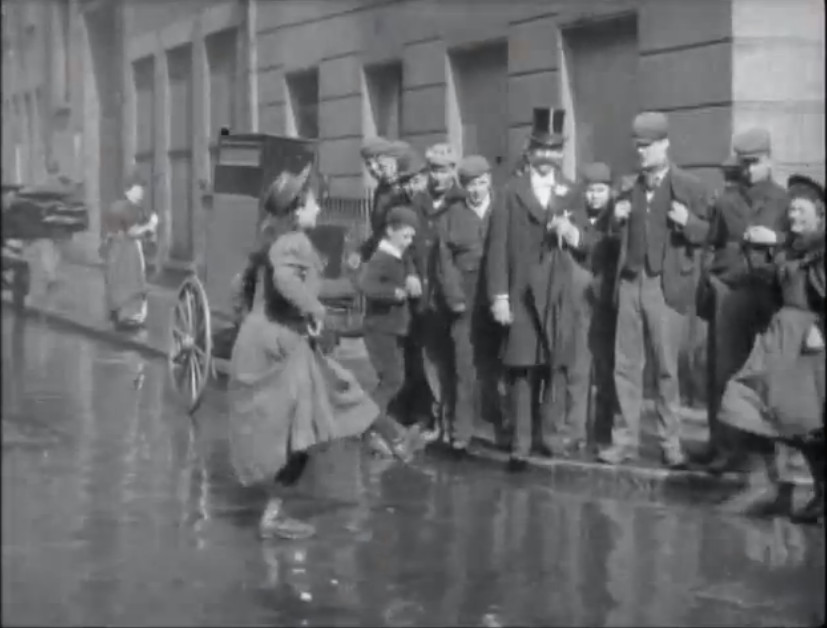
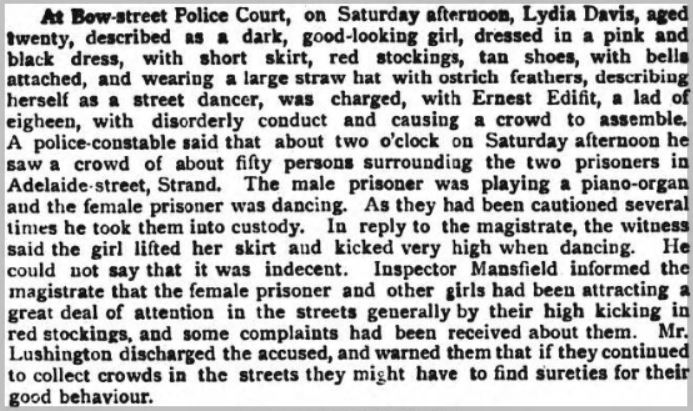
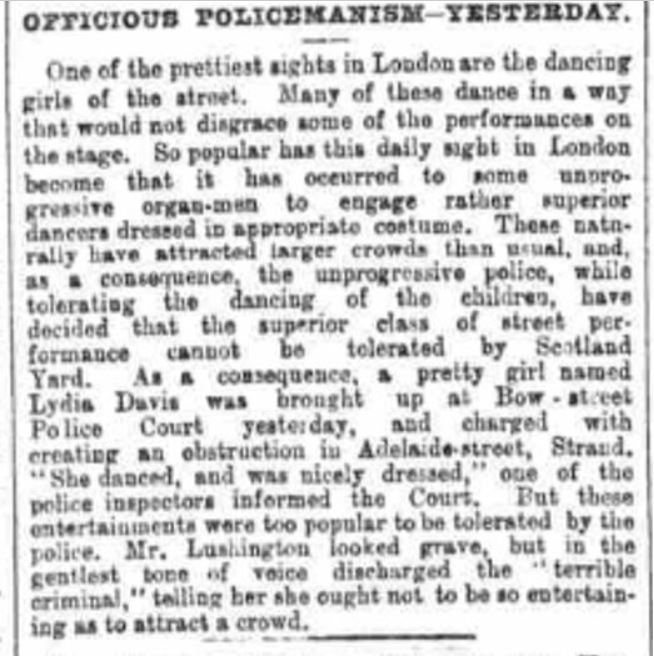
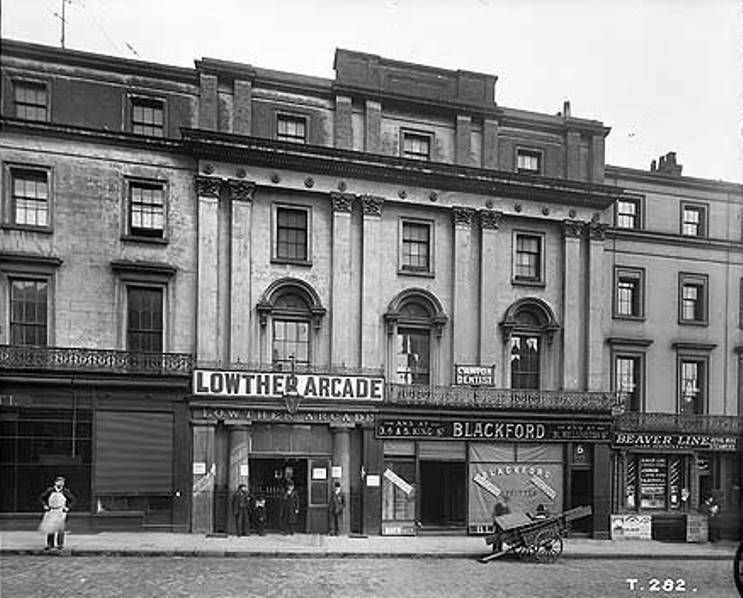
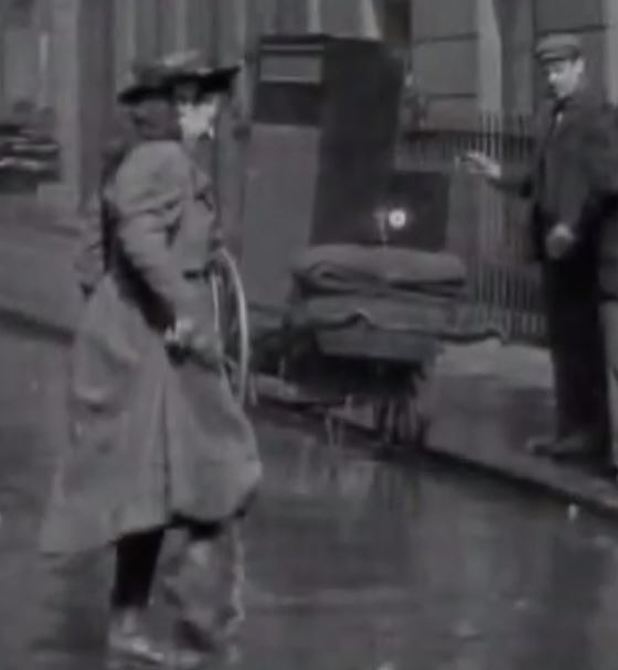
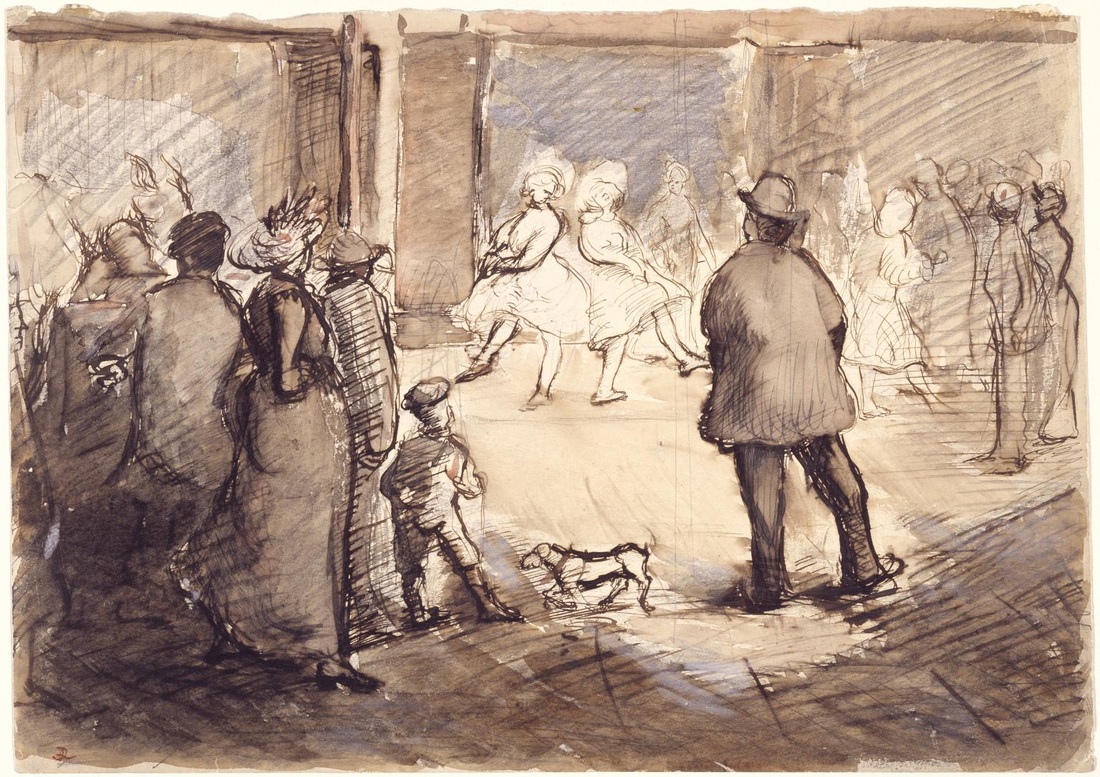
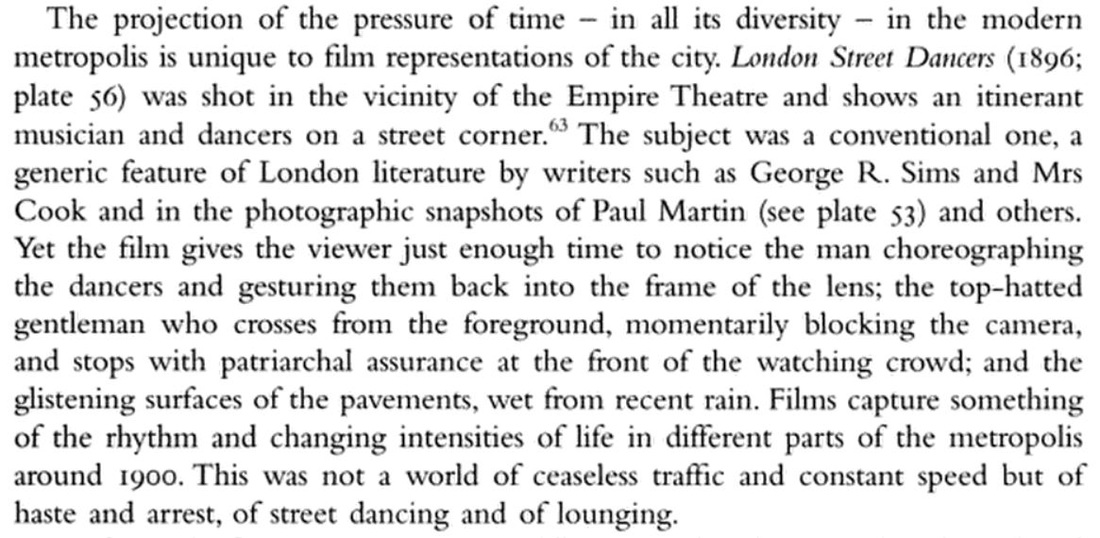
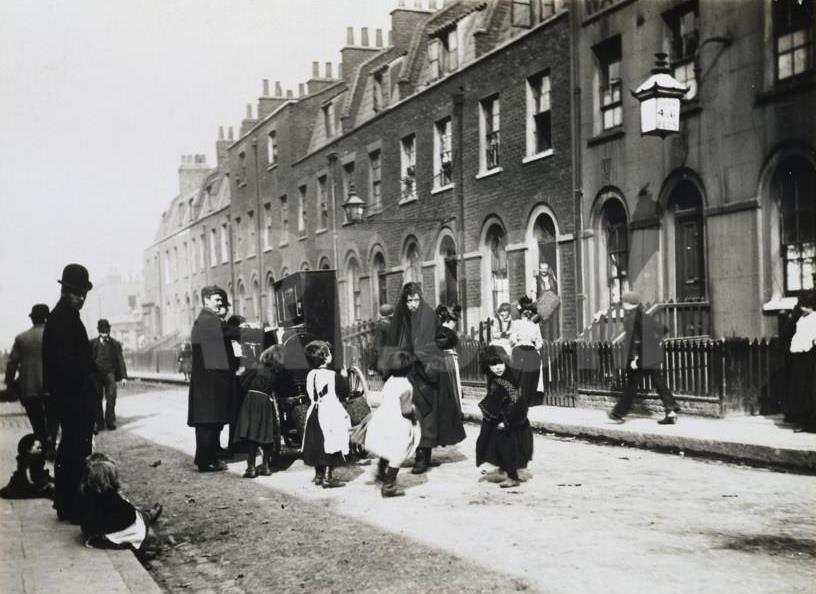
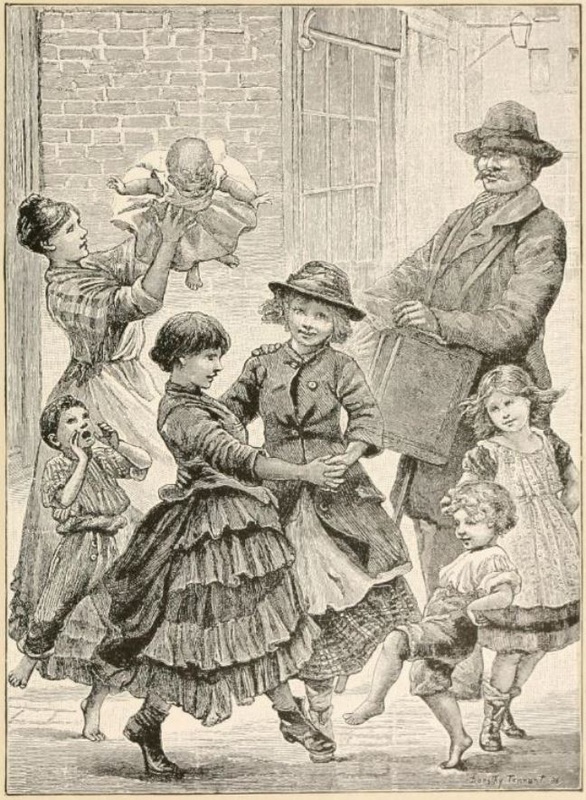
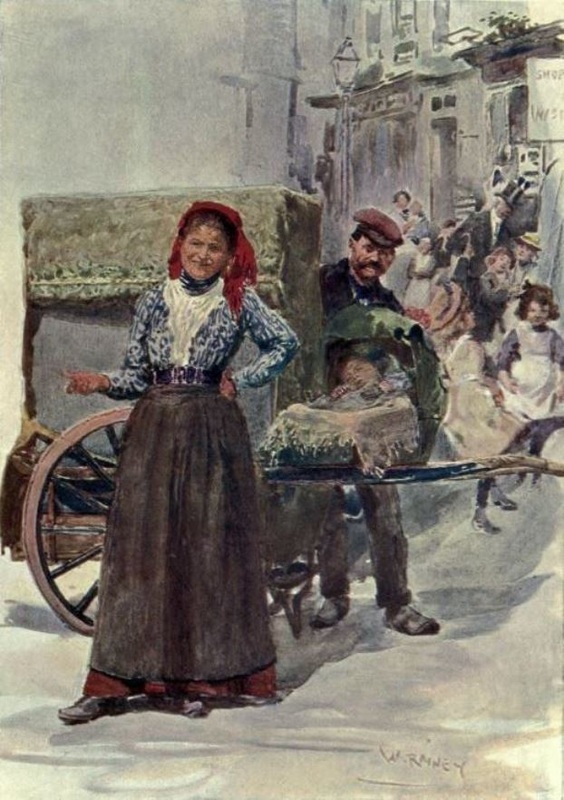
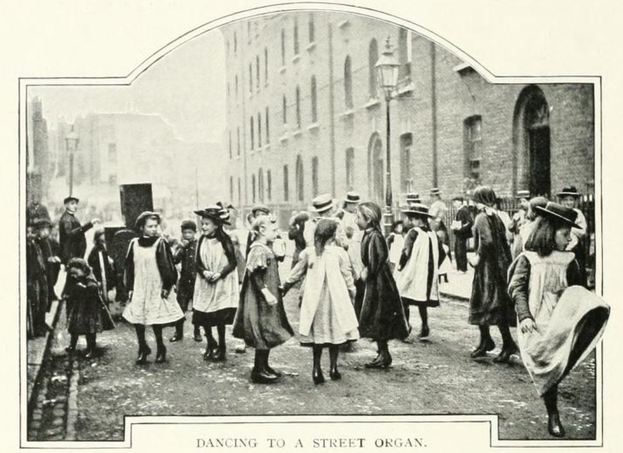
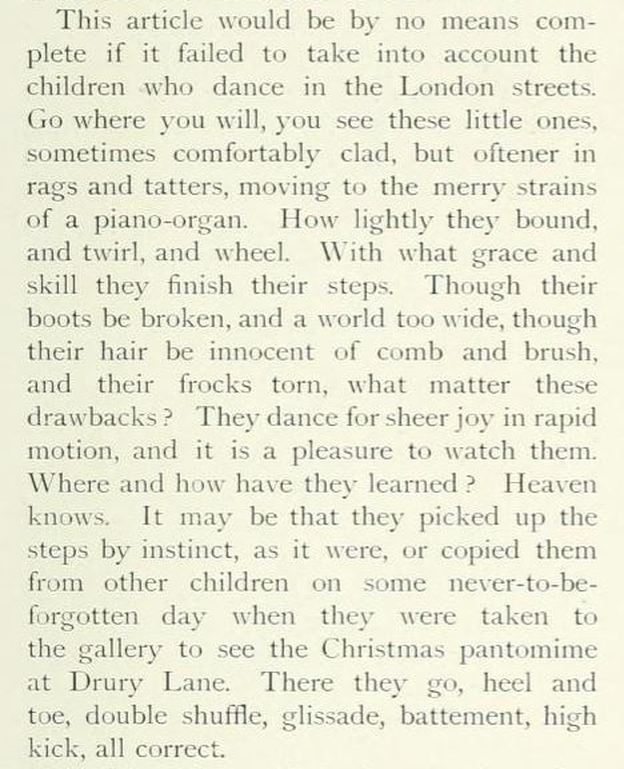
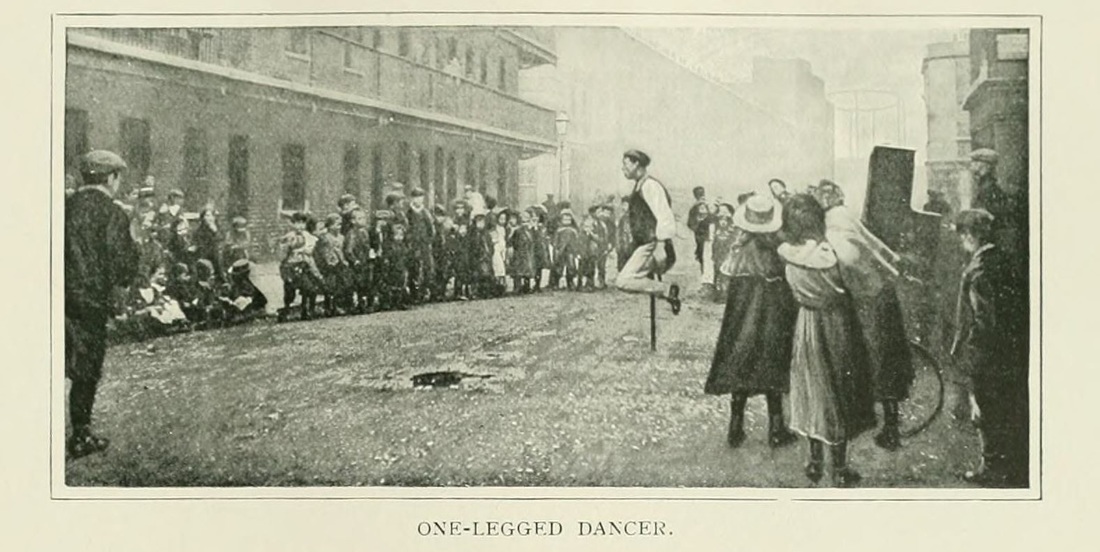
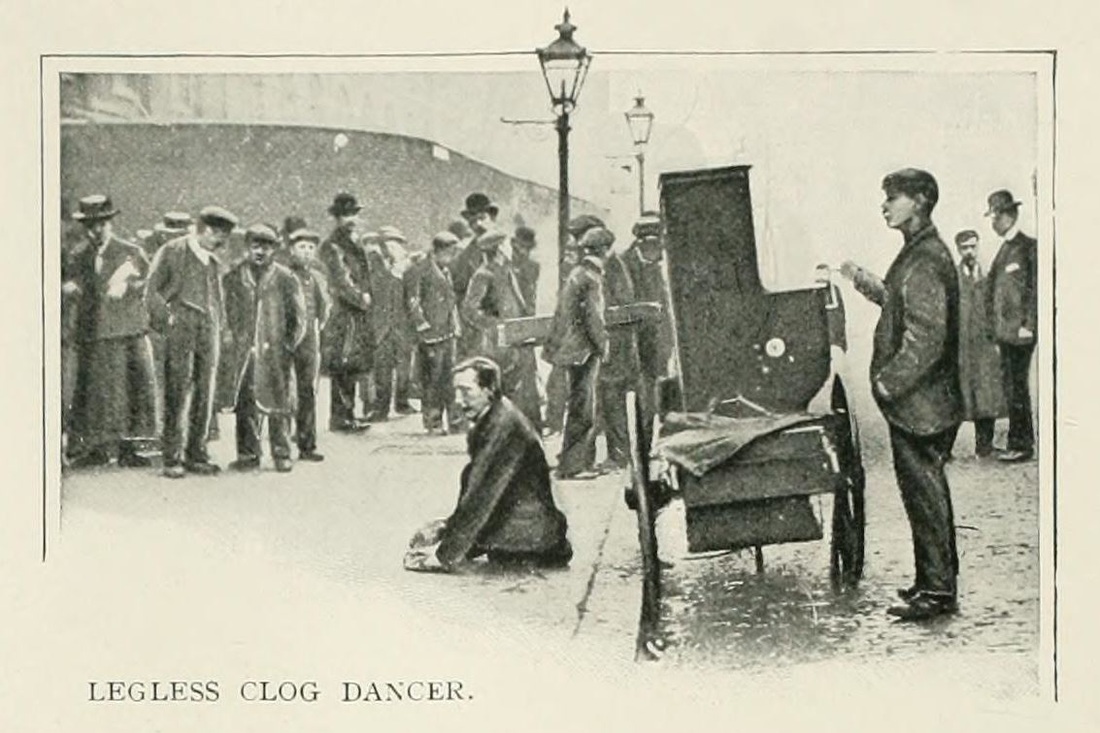
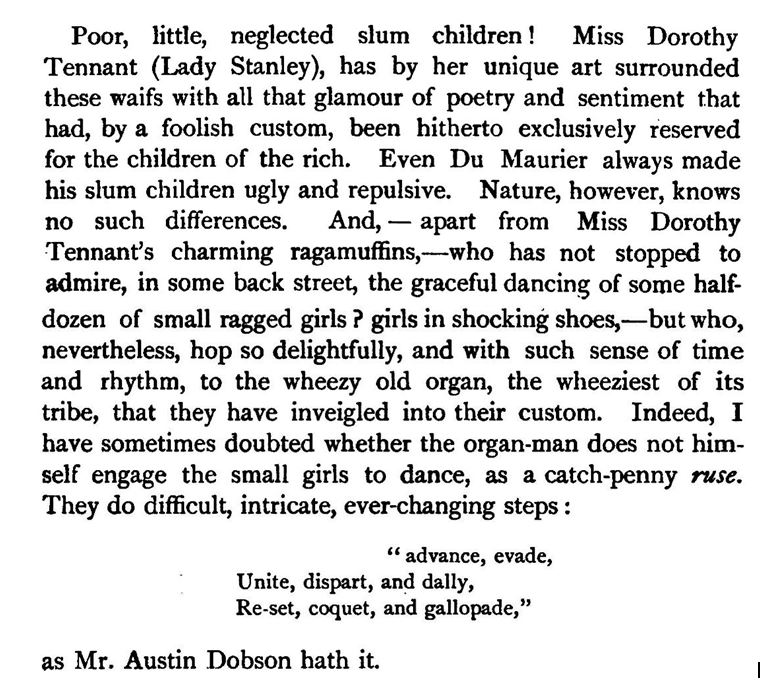
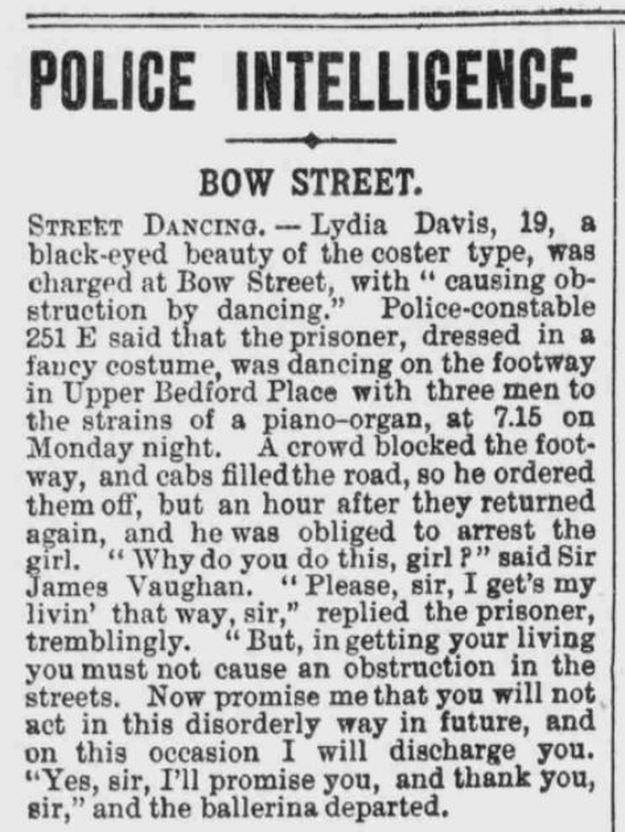
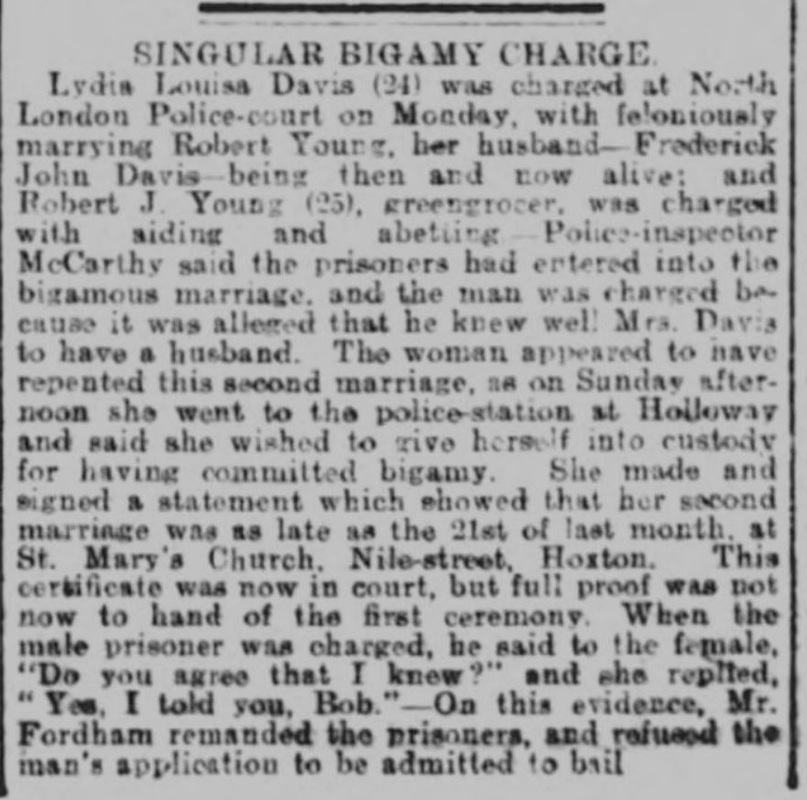
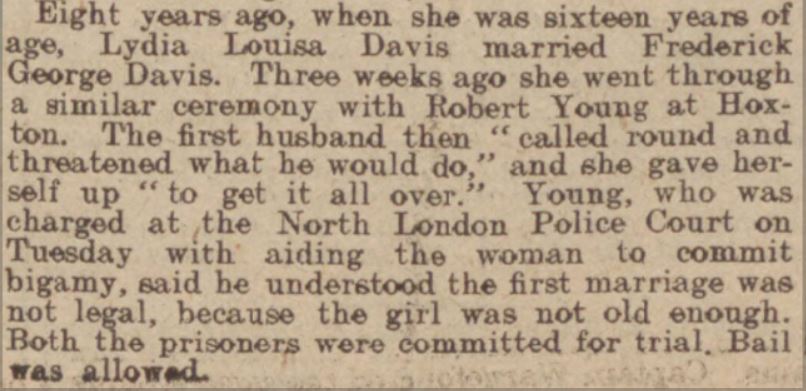



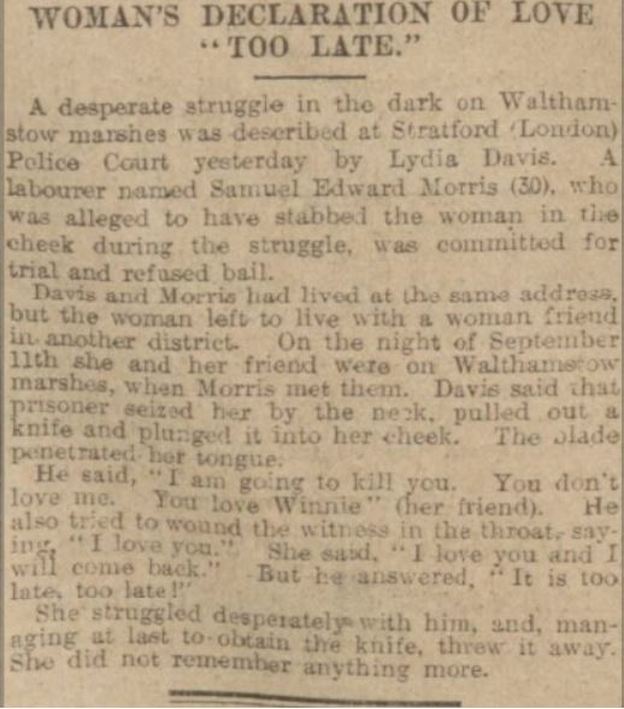
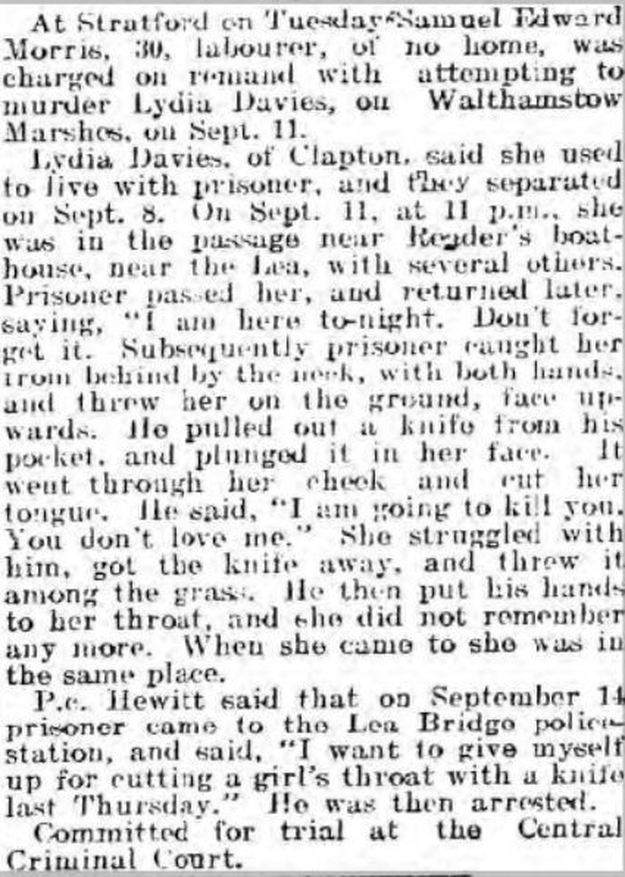
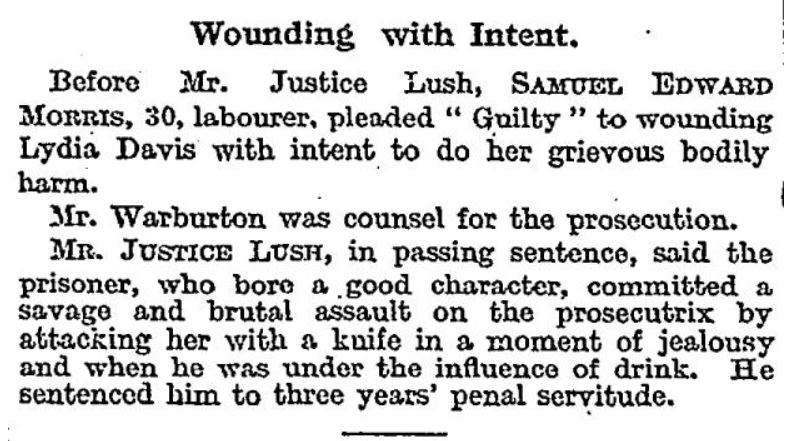
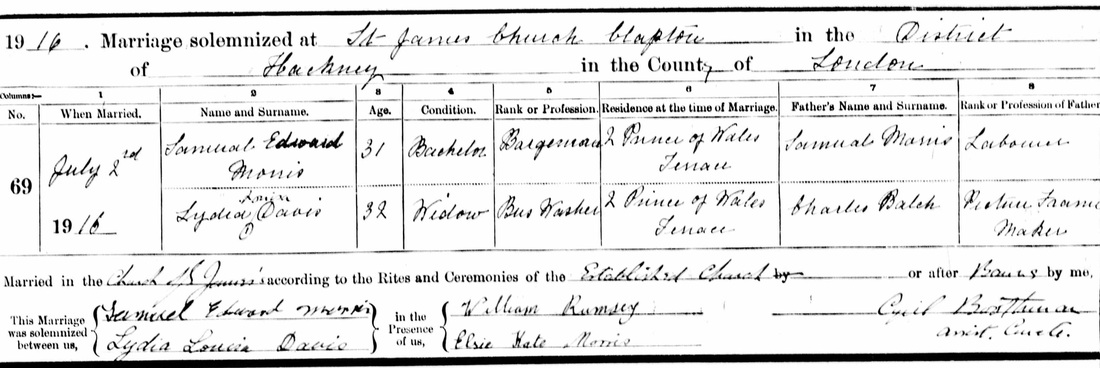
 RSS Feed
RSS Feed